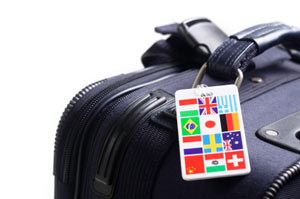I invited Emma Bartouche, from Capita Translation and Interpreting, to write a post for us about some of the issues involved in creating multilingual websites.
How Well Does Your Website Travel?
 When a leading entrepreneur contacted Capita Translation and Interpreting about website translation, it probably came as a complete surprise to him that his content management system (CMS) didn’t support multilingual content.
When a leading entrepreneur contacted Capita Translation and Interpreting about website translation, it probably came as a complete surprise to him that his content management system (CMS) didn’t support multilingual content.
Sometimes it is the blatantly obvious details that get overlooked, or it could well be that online marketing is not your forte. But for whatever reason, this is a classic example of this all too common mistake of website localization being an afterthought of the business.
Most businesses worth their salt realize that if your website is to compete with its peers internationally, website translation and SEO are a crucial part of your online strategy. Whether tackling it in-house or enlisting the help of an agency, if you are looking to introduce your website to foreign markets you need to be sure that the money you invest stands you in good stead to compete against the existing competition. Just because one set of keywords performs well in one country doesn’t mean the same words translated into the target language will perform so well. For example a producer of homemade jam might want to use the word jelly in the U.S.
Once you have ensured the CMS and back-end functionality will stand up to the demands of multiple languages and different scripts, the focus needs to be drawn to what’s on the page. As former German Chancellor, Willy Brandt once said:
“if I’m selling to you, I speak your language – If I’m buying, ‘dann muessen Sie Deutsch sprechen’ then you must speak German.”
I could quote a string of high profile case studies where literal translation of a brand’s corporate motto or product name has caused several red faces, but rather than make light of other companies misfortunes I’d rather draw your attention to the issues that need to be considered when emerging into new markets.
You may remember several years ago HSBC commissioned a number of TV ads which showed social faux pas and cultural differences abroad. The examples were humorous, but seemingly innocent mistakes can result in long lasting brand damage, leaving a bitter taste in the mouths of your target market.
To get off on the right foot it is essential you get your on page copy translated by a professional linguist who understands the genre of your brand and/or products; mainly because some markets require specialist understanding of the subject matter. Not to name names but when a popular IT company released its new tablet laptop in to the French market, the last thing the company wanted to be associated with was headache tablets!
To summarize, whether your online knowledge is in the know or just a ‘no’, here is a list of key considerations when branching out:
- Will the CMS support multilingual and ‘right to left’ content?
- Is the on-page copy optimized for the correct keywords in the target market?
- Could the on-page copy cause offence in any way?
- Is the website complying with cultural norms?
Thanks Emma!
Emma Bertouche is a Online Marketing Executive who takes a keen interest in social media, SEO, blogging and other online related topics. She currently works in the language translations market and writes for several websites and blogs. For more information or to enquire about getting your on and off line content translated visit Capita Translation and Interpreting.
Lucy is Editor at Corporate Eye


